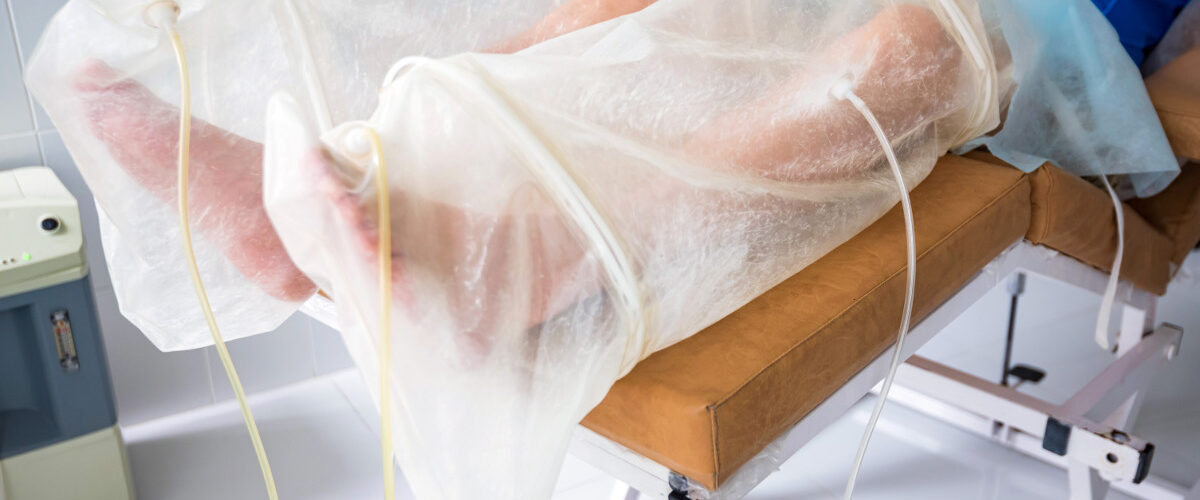Ozone therapy, a technique used to treat pain and chronic inflammation.
Ozone therapy or ozone therapy constitutes a modern complementary therapy with therapeutic successes, particularly in vascular pathologies, therefore, it is an alternative or complementary therapy, used by allopathic medicine.
The use of ozone began in medicine at the beginning of the 20th century, by the doctor Wolff, during the First World War, who observed how septic war wounds healed better under the action of ozone.
Currently we can define ozone therapy as the delivery of medical ozone to the body for the treatment of pain and different diseases.
Ozone therapy has the ability to improve the immune system, oxidative stress and inflammation, improve tissue oxygenation, as well as used as a disinfectant and trophic in the treatment of wounds.
Ozone therapy can be provided as a single therapy or as a complement to another treatment. Its action against pain is mainly as an anti-inflammatory.
Likewise, it reduces inflammation and therefore pain. It is a technique used for recovery, which does not encompass other specialties.
The application routes for this type of therapy are usually: autohemotherapy, which is the most common, it is a procedure that is carried out by extracting a small amount of blood to introduce oxygen and ozone into it.
It also serves to improve tissue oxygenation and modulates inflammation. It has an intra-arterial, subcutaneous, intramuscular and intravenous application. The anal route is also an effective option in many treatments, such as in cases of hepatitis or as a substitute for autohemotherapy and in specific disorders of the digestive system.
It is also used in hypobaric treatment (with glass or plastic bowls with two channels, one of which uses negative pressure and the other injects ozone) in varicose ulcers, diabetic ulcers and pressure ulcers.
Another form of administration is externally with ozonated oil, Likewise, it is blown into wounds or deep cavities. They can also be given in enemas for cases of colitis.
Now the diseases where ozone therapy treatment is indicated are the following:
Vascular diseases, arteriosclerosis obliteraste, pain at rest, claudication at short distances, digital gangrene, diabetic foot, cellulitis, vascular and non-vascular ulcers, acute lymphangitis, healing defects , mixed dermatitis, Cerebral ischemia, Revitalization cure, recovery after intense sporting effort and preparation for competition, multiple infections, infangitis, chronic fistulas, Suppurations, Bed sores, Extensive and deep wounds, Vaginal infections, mastitis, Post osteitis poliomyelitis, hepatitis and herpes zoster.
Just like other viral diseases, Rheumatic Diseases, Immunological Pathology, Adjuvant in radiotherapy and in acquired immunodeficiency, traumatology and rehabilitation Disc herniation, discoradicular conflicts, gonarthrosis, lumbago, osteochondritis, acne, furunculosis, eczema and mycosis.
In severe cases, ozone therapy has given positive results with rapid recovery and return to routine activities.
Ozone therapy can be administered by any route, depending on the indication, except inhaled: breathing ozone is strictly prohibited.
It is important to know that the application of adequate doses of oxygen and ozone does not produce side effects or allergic reactions.
This type of treatment can work as both palliative and curative, depending on the patient and the pathology for which it is used. However, it is not a preventive treatment.
FONT
https://www.topdoctors.es/diccionario-medico/ozonoterapia
https://hospitalcruzrojacordoba.es/consejos-de-salud/los-beneficios-la-ozonoterapia/
https://www.clinicavascularbarcelona.es/tratamientos/ozonoterapia.html
https://clinalgia.com/ozonoterapia-que-es-para-que-sirve-beneficios/








